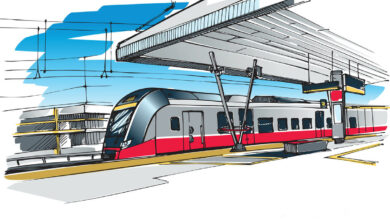Foreseeing the future
Cesário Ginjo was one of the first to realize that the future resides online. And it does. And it will. Sales increasingly happen without human interaction, technology has emerged as a business partner for sellers and a best friend for those who want to buy without leaving home. Cesario foresaw the future when it was yet to happen, and he continues to bet that commercial success comes from electronic innovation.

Milénio Stadium: How much of your business is online?
Cesário Ginjo: I would say 95%.
MS: Why did you choose this business model?
CG: I’ve been selling flowers since 2000. The industry is dictated by consumer behaviour and because of this, it was one of the pioneers of online shopping—many other businesses have only come online in the last five years where others have had to change back and forth depending on how people purchase their product.
In the flower industry, if we go back 20 years, the customer needed to walk into a flower shop, make your purchase then walk out with your flowers. Years later, you could walk in, pick what you wanted and they would deliver it for you. After that, you could call your florist and have them deliver your order—companies would send a fax placing their orders for delivery. Then, around 2001/2002, it changed again and the flower industry started to look at ways that could improve services and be stand out. When Google was born in 1997, online businesses were driven by the speed, or lack of speed, of our internet… and people didn’t trust it like they do now. Back then, people would go online, look at a website and use it as a catalog. They’d pick up the phone and talk to somebody human—because there was still that trust factor. People would think “I’m going to put my credit card in this box and I don’t know what I’m going to get”, or “who’s on the other side? I don’t know”. So, as people became more adapted to shopping online, they would try it and have a good experience, they would do it again. The flower industry became a pioneer and I had the opportunity to be there from the beginning—in 2000, FlowersCanada.com was the first company in Canada, with any online volume. I built our first website, that was probably ten pages. To give you a comparison, something that you can get today for 50 dollars, we spent 25 thousand dollars for something very simple that a 15 years old could do today.
The business also had its challenges. I remember having an argument with my wife at that time—our first child was going to be born and she thought we should invest in a minivan and I thought those 25 thousand dollars should be invested in the website. I bought the website and that was the start of everything.
Today, the online market is basically there to serve peoples needs. “How do I make it simple for you? How do I make it easy for you? How can I take less of your time so you can do the other things you want to do?”.
MS: What are the challenges, advantages, disadvantages?
CG: I think with anything we do, we always have problems. We eat McDonalds, we get fat, we like to drink, it’s not good for us. In everything we do, there’s always a good and a bad side but looking at online shopping, or anything on digital, is that the advantages outweigh the problems.
MS: And do you think they do?
CG: Absolutely! The advantages definitely outweigh the problems. Let’s use Christmas as an example: you go to a mall and you waste over an hour, even before you start to shop – you have to find parking, you’ll probably have someone yelling at you because you took their spot, then you have to take the stroller for your baby, then you go in and find a t-shirt you like and the salesperson says, “Oh, I’m sorry we don’t have your size!”. You might go and spend three or four hours in a mall and maybe come out with half of your Christmas gifts. This is shopping, trends and habits. These trends are created by companies that pay marketing companies to basically put little ideas in your head. A couple years ago, it was either go to the store or go online to do your shopping but if we use the clothing industry as an example, they would love to do everything online…the problem is that some people want to feel the material!
MS: They want to see how it fits…
CG: Exactly, they want to see how it fits because a medium from this brand or style might be a bit big on you and a medium in that other brand might be perfect, it depends. The future is this: what the marketing companies started to do with some brands, and lets use H&M as an example… they keep three or four sizes in the store, so it isn’t overstocked but just stocked enough to keep the store full, and make it look pretty. When people walk in and find something they love, they approach the sales person and say “I want this but you don’t have my size” and they will tell you “no problem at all, I can have it shipped to your door tomorrow!”. So they have essentially turned their stores into online shopping. The store has become their website. You go to the cashier, pay for the t-shirt you liked and within two day you’ll receive your product at home—that’s how online shopping has evolved.
Going back to your question, There are probably eight good things and a few bad things. The bad things are the threat of your credit card getting compromised; for people who don’t have good control on spending, it is easier easy to spend money online, that you may not have; job loss, which doesn’t directly affect the consumer, but in essence it might affect your family. So yes, there are some bad things but at the end of the day, the bad things that are in the online shopping world, are in any other industry—does that mean you won’t do online banking, for example? A huge benefit to online shopping is time—it allows us to spend more time with family or just more time doing things for yourself. We should all have “me time”. Online shopping gives us that. Truth is that you won’t see as many malls as today in the future, malls will be boxes that are actually online shopping stores.
MS: How do smaller online business compete with the large established companies?
CG: You will never compete with Amazon. What small business or what we called, local business need to do is educate the consumer on what makes them different from big companies like Amazon. We call it “stay in your lane”. If you “stay in your lane” and you’re good at what you do, you’ll still have a successful business.
Today, Amazon’s model is that you buy something and 60 or 70 percent of what comes from Amazon, comes from a third party. About 30 percent comes from them–which means they buy it, they warehouse it and then they sell it to you. Amazon is also not comfortable…The only reason Amazon has so many merchants is because those merchants don’t know how to market themselves. They prefer to put their product on Amazon and pay a commission but if one day in the future the percentage of people buying online increases, and people see they can sell directly to the consumer, why would they sell on websites like Amazon?
Online consumers are not loyal. We are like kitty cats playing with the silver ball. When we see something that shines, we click. Ten years ago, back to the flower industry, you would go to your florist, you were loyal to them…Now the attitude of the younger generation is: “when I need it, I’ll find it”.
Catarina Balça/MS








Redes Sociais - Comentários